April, 2023
now browsing by month
Reclaiming My Body Pt.2
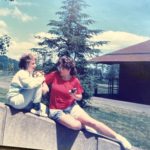
Rowing my millionth meter might not seem like such a milestone to some people. The meter count is a ‘lifetime,’ or however long you’ve been using your Hydrow, total. I’ve never actually rowed on the water or with other people. I’ve never competed. So, I wanted to try to explain how significant this mile stone is for me. As I mentioned, I’ve never been successful at gym memberships, or running, or anything really that involves exercise where I can be seen. As I’ve rowed this last two years and tried to pick out just exactly what it is about it that I have loved, I had an intense realization. I love it, because I can do it alone in my basement, but the athletes and their location make me feel like I am not alone. I can do my workout, feel like a part of a team, and yet, no one can see me.
So much of my recovery from my marriage, and healing from life in general, has been about how feeling invisible wounded me, and how important it has been to let myself be seen and to learn to really see myself. It might seem contradictory for me to be so in love with an activity precisely because it allows me to remain unseen. The dichotomy of my life has always been a sense of invisibility among those who I most long to really see me, and a deeply uncomfortable hypervisibility in public. The sexualization of young girls and fatphobia compounded in my life and created a deep need to control as much as possible how my body shows up in public.
I didn’t have the language to understand it or describe it, but I was about 10-11 years old when I realized my body was no longer my own. Here is a picture of me in that time frame, 1983-4. My family had just moved across the country, leaving all our extended family in Minnesota. All of our belongings packed into a Chevy Malibu station wagon and the trailer my dad built to pull behind it, we left International Falls and headed west. My dad drove the whole way, I don’t remember much about the trip, except that every afternoon we’d stop at some diner for my parents to get coffee and I’d get a piece of pie. I’d always order cherry, because it was my favorite. When I look at this picture, I see what a child I still was. My legs still seem long and like I might get some good height, but I stopped growing taller not long after this. I hit about 5’4″ in 6th grade and just stayed there. It was the year I got those glasses, so it likely felt like some kind of miracle to be able to sit so far way from the TV and still see. The other thing happening in my body, though and you can see that as well in this picture, is that I’d started developing breasts. By they end of this year, I’d be wearing a bra at least one cup size bigger than my mothers.
It was this point that the adults around me started talking about my body. Well intentioned, or at least neutral observations about how early I’d started developing, but also ribald jokes about what such an early start might mean. Just how big would my breasts get? It was also at this point that older kids started commenting on my body in ways I didn’t understand. I remember, being at the school playground one afternoon. I’d either walked back down there to play by myself, or stayed afterschool for a while. I was mostly alone on the playground when two ‘older’ (maybe sixth grade, boys) came to the playground. We were all on some sort of climbing contraption, jungle gym style thing talking, when the tone shifted and they started asking me if I liked cherry pie and if I had some. Remember, that detail about afternoon stops on our trip out west? That was my only understanding of what cherry pie could be. So, I was confused and more than a little frightened by their tone and questioning. It felt like taunting. I knew some how it was about me, about my body, but didn’t understand. I don’t remember how I got out of that situation. I think I just walked away and went home. Given our ages, I am not entirely sure they even fully knew what they were talking about.
By the spring of 1987, I am pretty sure I’d outgrown all the estimates about how far my breasts would develop. Yes, that’s me in the red shirt, with the most terrible hair, but isn’t terrible hair a requirement in 8th grade? By this point, I’d started to understand what made me uncomfortable about the comments and jokes that had progressed to observations about how I must get black eyes when I ran. The boys at school would snap my bra strap, or find some other way to tease me about my breast. I don’t even recall what they would say. My most vivid memory is standing in a biology classroom with some popular boy in front of me, in my space, and asking something I knew to be rude and crude. Again, I don’t remember my reaction, other than my silence and my face burning. This is also the point in time where I know I began to think of myself as big or fat. I began trying to hide my body in the loosest clothes possible.
By high school, that girl in the white shirt, front center in the bottom row, knew she was fat. The social pressure to be thin had kicked in and she knew that her shirts had to be a certain length to help hide her fatness. She’d had plenty of crushes, but very few serious boyfriends and hadn’t really done anything more than kiss a boy. Only one of those boy friends had been from our actual school. The rumor mill, though, it constantly vacillated between the competing theories that I was a lesbian or I was pregnant. I neve could figure that out.
By this point the boys had stopped snapping bras, but the random catcalls on the street had started. The jokes among the adults had changed to innuendos about what would happen when I started dating. Everyone around me was always talking about my body, and I was never allowed to be comfortable in it.
In 1989-90, when I absolutely should have rocked this Wynona Ryder, Heathers, look for Halloween, I never would have dared! This year, though, for my friend’s 80s themed fiftieth birthday party, I dared, even though now I am actually fat. I am small-fat for sure, but still fat. (Small-fat is a fat person who can still wear standard sized clothing.) Daring to choose this outfit that accentuates my breasts and doesn’t hide my fat, and wearing it to the party, demonstrate just how much I have learned to love and accept myself. How I am willing to step out into the world that may invite the comments I have been trying dodge and ignore my whole life.
Many factors play into the fact that I dared to rock this outfit to that party, but my rowing journey is absolutely a huge part of that. Yes, my body had changed a bit over the past two years. I wear slightly smaller sizes. My always already good blood pressure has gone down and is even better, but the weight on the scale at the Dr.s office hasn’t changed much at all. Finding an exercise I enjoy, and that I can do without feeling like I am on display. Has given me the perspective and the strength to resist the incessant fatphobia of American culture and to give myself the compassion and love that everyone deserves. Celebrating my 1M meters, publicly and loudly, means so much to me, because it feels like making my body mine again.
I am still not joining a gym or running in public though. 😉
Reclaiming My Body Pt.1
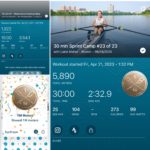
Two years ago, at 47 years old, I took a very expensive gamble on myself. After a lifetime of signing up for YMCA or gym memberships and not using them, or using them only once or twice, and of getting pilates videos, hand me down eliptical machines, and treadmills and then not using them, I bought myself a rowing machine. All through 2020 lock down, I’d seen the Hydrow ads popping up in my social media feeds and thought I would like it. One look at the price, though, immediately put the brakes on any impulse purchases. At that point I didn’t even have a couch yet, I certainly wasn’t going to buy fitness equipment. About a year later, though, couch in place, the world still reeling from Covid, still vascilating between locking down and opening up, I took the plunge and finally order the machine and the whole kit that came with it. (In for a penny, in for a pound.)
I started rowing and within a week of doing those 15 minute sessions nearly every day, I knew this was different. For the first time in my life, I’d found an exercise I loved. From the moment I saw the first ad, I knew the rhythmic nature of the movement was going to appeal to me. Although I do love the rhythmic nature of the rowing, I don’t think any other machine would have captured my heart in the same way. After my intitial Hydrow sticker shock, I looked at sever other machines and seriously debated getting a different model. I am so glad I didn’t though. Look at my face in that picture, after just one week of rowing! I love rowing with Hydrow, because I workout with athletes who are on the water. I see really beautiful places from around the world as I row in my basement. The athletes are genuine and caring. They are motivational as they guide us through workouts and are so clearly working out themselves. When we finish a challenging workout, the athletes are just as sweaty and winded as I am.
Hydrow also motivates users by offering prizes for milestones. After rowing my first 100,000 meters, I got a water bottle, for 250,000, 500,000, and 750,000 meters I got different pairs of socks with the meter totals on the toes. Sure, I paid for those prizes with my monthly subscription fee and sweat, but they were hugely motivating for me. Like I said, I’d never had a workout stick before, I didn’t necessarily know how to set goals, not realistic ones that didn’t involve some kind of weight loss or change in body composition. From the beginning, my only goal was to be stronger and more fit. They are admirable goals, but not exactly measurable. They don’t necessarily allow you to see progress. My hydrow rewards helped me learn how to set smaller goals, ones that I could track and see.
Once I hit 100,000, I knew I was going for the Million Meter club. I didn’t really talk about it until after I made 750,00, but then it became real to me. It wasn’t an ephemeral goal. It was reality, because I already knew I could row the 250,000 meters to get from one goal to the next. “When I hit 1M meters, I’m going to … ” was my new language. It took almost exactly two years from my first row, but yesterday I DID IT! I rowed my one millionth meter. I may have a new definition of what constitutes sweaty, but rowing still makes me smile.
When I realized, after my work out on Wednesday, that I would meet this milestone yesterday, I went back and found my first row summary in order to make this comparison. Of course, once I finished yesterday’s workout, I immediately pulled together this lay out of pictures and blasted it all over my social media, and texted all my friends who wouldn’t see it through public channels! There will also be a party later, in about a month I think. Maybe sooner, now that I have made the mile stone; we’ll see how I feel and how it comes together.
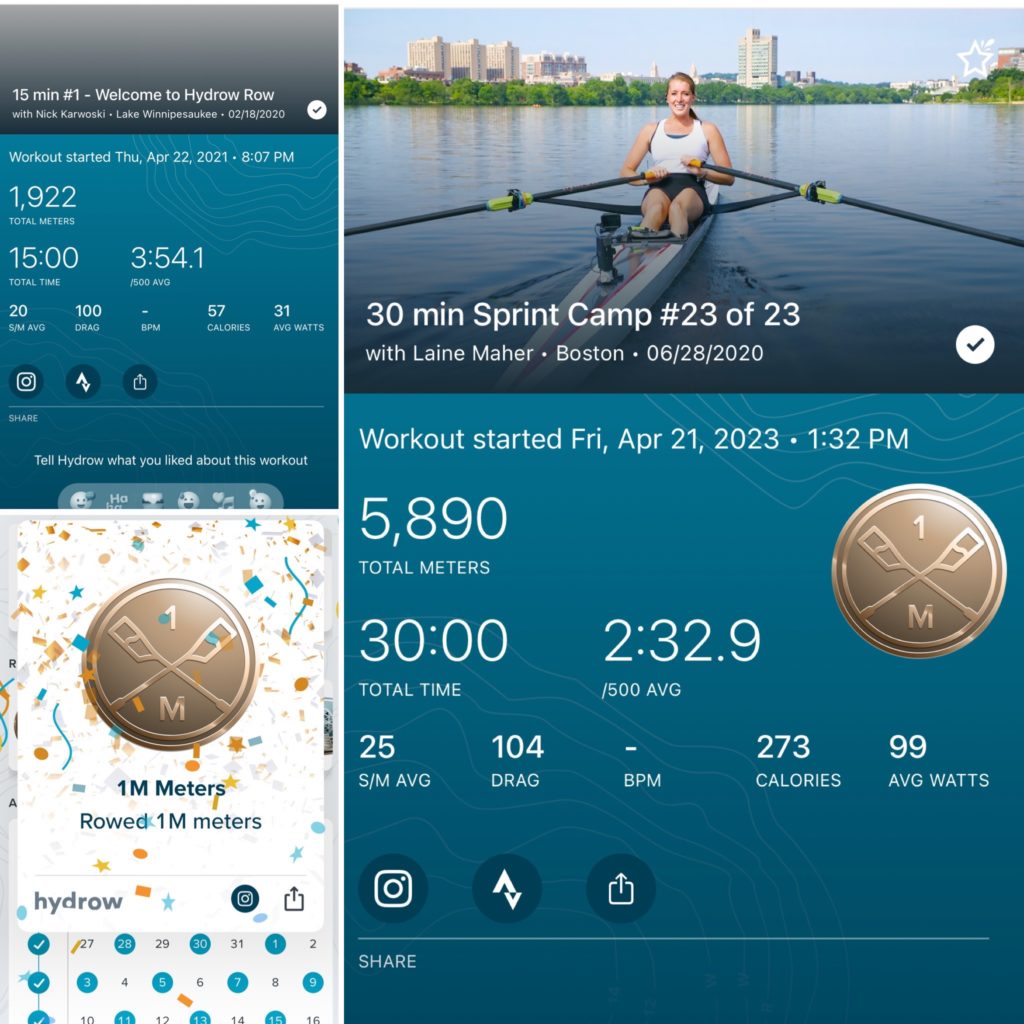
As you can see in the comparison, my million meter row was also the final row of a Spring Training Camp designed to help improve speed. In the fall/winter of 2021, I did the Endurance Training camp which it January of 2022 culminated in a 60 minute row. This spring, as I struggled to get back into the routine and habit of rowing regularly, I decided to give the Sprint Camp a try. It was a real challenge for me, another much smaller gamble on myself, because I really didn’t like rowing at high speeds like 30 strokes per minute (s/m). Five or six sessions in, I almost gave up on it. But, I stuck with it. So, yesterday, in one workout, I accomplished not one, but two rowing goals.
Serendipitously, it was also the perfect row in which to do this. You see, it isn’t just the rhythmic nature of the row that appeals to me, it is also the synchronicity. The way that matching up with the athlete allows you to forget about the big elements of the stroke: legs, core, arms, arms core, legs, and lets you focus on the details: relaxing your shoulders, hands, and face, keeping your posture, breathing. I enjoy working out with all the Hydrow athletes, but matching with some is easier for me than matching with others. For this workout Laine and I gelled. I don’t think my eyes ever really left her hands as she guided me through three 8 minute intervals. I’d turned off the leader board and purposefully ignored all my other metrics, because I knew that if I looked I’d constantly be worried about meeting the distance to make it to 1M. Laine is always super encouraging and breaks down segments so well, but this time the only thing I really remember her saying is, “Repetition breeds confidence.”
I’m fairly certain that anyone who knows me has seen the truth of that statement over the last two years. Repetition bred confidence in my stroke. Legs, core, arms, arms, core, legs sounds simple and straight forward enough, but takes longer than you might expect to really get the hang of. Repetition bred confidence in my persistence. At one point I had a 70 week streak going (meaning I’d worked out at least once a week for 70 weeks). Repetition bred confidence in my recovery. Throughout the hard workouts of both of training camps, I maintained a steady “every-other-day” routine and trusted my body would be ready for the next one. Repetition bred confidence in myself. Sitting down to row, even when I did not want to row, making time to row, even when I did not want to row, taught me how to prioritize myself. Meeting those milestones, using sweat and time to earn my socks, taught me how to manage stress and my mental health.
I am stronger, in every way possible, at 49 than I have ever been in my life. And, in the next post, I will try to explain why and how it took me so long to get to this point. This post is just about the celebration, about the smile on my face after nearly every row, and about how I am so much closer to my RAD friend, who has been my accountability buddy on every step of this journey. Her encouragement has been fundamental to my persistence and success. It’s about looking at the change in my average split from 3:54 to 2:32 and viscerally feeling that progress.
Replenishment
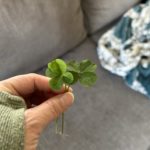
“Mowing” the lawn for the second time this year, I started thinking about my relationship to the it. I don’t care that it is filled with clover. I still get a thrill every time I look down and find a four-leaf one. I pick them to tuck away into that day’s journal entry. I wish for it to be “better,” filled with flowers and prettier or with beds of vegetables and more sustaining. Yet, I only kind of know how to do those things, and the thought of how much work it would take to do them overwhelms me.
As I mowed this time, I tried thinking about what I like about the yard and the yard work. I realized I like what comes after the work. I love being covered in sweat; my shins coated green with lawn clippings, sitting in my lawn chair with a cold beer or water. After the beer, a cool shower to rinse everything off. Getting out of the shower, toweling off just enough not to make a mess, then laying down to air dry. Laying there, feeling the moisture evaporate from my skin, I can concentrate on my breath and think about everything or nothing. The lightness of my room from the sun through the shades, the gentle breeze from the ceiling fan that runs constantly most of the year, almost always combine to lull me into the perfect afternoon nap.
One of the privileges of my life is that, on the weekends at least, I generally have the privilege of napping whenever I want. Napping is actually a pretty good barometer by which to read how my life is going. When I find myself napping too much, I know to check-in with myself because I’m likely a little depressed about something. If I am napping too little, I know to check-in with all my boundaries, because I am likely working or socializing too much. How I talk to myself about my napping tells me when I need to work on my self-compassion practice. (Okay, so yes, I always need to work on my self-compassion practice.) Right now, napping is self-care.
I started practicing self-care before it became a capitalist commodity. Not with naps or even self-compassion, I wasn’t that good at it yet. I started with therapy that was, in my mind, ONLY about finishing my dissertation. In fact, I am pretty sure that woman never saw someone change the subject faster than when she brought up any other part of my life. I wouldn’t have called the therapy self-care at that time, but absolutely was and it led to the second most important piece of self-care I learned. I started keeping what I called The Distaster Notebook. It was thick, black with a soft cover and tiny grid paper. It started life as the place where pre-stroke, I was keeping my comp notes and dissertation ideas. Post-stroke it took a darker, more practical turn. What to do when someone you love is refusing to sign voluntary commitment paperwork. What to do when you have to find a mental health/rehab bed in a fairly isolated, rural, area. By the time I faced the end of the worst times, I had the process down. Get the DH in a safe environment, notify our support systems, find therapy for myself.
Doesn’t sound like self care, but it was. It was because of that notebook that I figured out caregiving 101 essentials like dump out, not in, know what you can control and what you can’t, and that you can’t give if you are empty. If you are care-giving, or being cared for, you have to find someone outside the immediate situation for venting. Knowing what you can control and what you can’t helps you manage your expectations. If you are care-giving or facing any kind of trying time, you have to make sure you do whatever you can to keep your battery full.
Sure, sometimes replenishing yourself means spending money on a new serum or mask for your nightly skin routine. Sometimes it means making time for yoga class, or booking that massage. Too often, though, those are the only ways we talk about self-care. We’ve almost managed to talk it into an empty concept. Sometimes though, and I think they might be the best times, replenishing yourself means taking time to air-dry after a shower, or drinking your morning coffee in the dark and quiet before the day officially begins, or listening to your favorite, saddest, album and singing along (or not), or making time to meet with friends. Most of the time it is some combination of these things.
It gets tempting to call anything we want self-care. To think that self-care is whatever we think it should be in the moment. But, doing that doesn’t benefit us. It generally doesn’t replenish us or reveal what we need to work through whatever has been depleting us. Replenishing is the operative word here. Self-care can be so many things, but in reality its always finding those things and people that replenish us in some way.
Sometimes, when I meet new people and they hear my stories, the stroke, my marriage, the divorce they marvel at how much I have been through or how strong I am. Generally, I deflect their wonder by reminding them how my experience is “not that bad,” other people have been through worse; or, I say something about how its not that special, because if I can do something, any one can do it. What I don’t admit is that it was A LOT. I don’t always know how I got through it. Yes, I am strong, but I am not strong because I got through it. I am strong because I learned how to soften and care for myself, how to be resilient, as I got through it.
As we face the end of semesters, school years, and the space of summer, how will you find the things and people that replenish you?
Hard Reads
Free literature dissertation idea for whoever wants it: A comparative analysis of contemporary women authors who re-tell classics. The textual pairings Joseph Conrad’s Heart of Darkness and Ann Patchett’s State of Wonder, Goethe’s Faust and V.E. Scwab’s The Invisible Life of Addie LaRue, and Charles Dickens’ David Copperfield and Barbara Kingsolver’s Demon Copperhead. It is a rich set of texts and stories, because Patchett and Schwab fully embrace the gender swap. Not only do the central characters of the story become women, the stories themselves are rooted in the needs and concerns of women. Kingsolver takes a different approach. She retains the gender of the central character, but repositions the story in contemporary Appalachia. Gender issues circulate throughout the story, but are secondary to issues of poverty and addiction.
Last year, I joined/helped form a book club for women academics at my work. There are relatively few of us, and it was an attempt to build and strengthen our connections. Generally, I’m a bit skeptical of book clubs, and stick most closely to my “Not a book club” reading discussions with my friend DJ Librarian. This one has gone very well, though. We’ve made it through the first round of everyone picking books and there was only one dud. Even the person who picked it was underwhelmed. Right now, it’s mostly fiction and pretty light. I listen to many of the books or try to get them on my kindle, but I miss having a tactile book when everyone else is paging through theirs. What I have learned from this experience is that the founder of the book club has excellent taste in reading material. Outside of bookclub, I’ve read several books she’s recommended and all have been great. She recommended Demon Copperhead to me and called it life changing. It wasn’t life changing for me, but Demon Copperhead is a really great book.(Discussion of the books larger trope ahead, but I’ll try to avoid real spoilers.)
It was the hardest book I’ve listened to in a long time. Normally, once an audio book hooks me, I plow right through it. I’ll listen 7-8 hours a day as I do chores around the house and take breaks to play mindless phone games or scroll through social media. A 20+ hour book will sometimes take me a week, sometimes just 3 or 4 days, depending on when I start it and how much I listen during the week. Demon Copperhead is a 21 hour listen that took me at least three weeks to finish. I had to take breaks. I had to skip one part, because I knew what was going to happen and could not witness it; and, the part I had to skip came well before the character descended into a opioid addiction that felt all too real and familiar.
In one of the lighter books I’m reading for book club and to recover after Demon Copperhead, a mother and daughter are talking about another person who lives in their building. The mother explains that the other woman, “…wasn’t always like that. She’s just … lonely.” The daughter says she has her husband, implying that the woman cannot be lonely with someone else around. The mother says, “There are many ways of being lonely, darling.” What makes Demon Copperhead so good and so difficult for me is that Kingsolver captures the all the complicated loneliness of opioid addiction. The loneliness of the addict. The loneliness of living with an addict. The loneliness that creeps into the families and communities surrounding addicts.
I didn’t entirely know about the addiction storyline in Demon Copperhead. Given what I knew of the book, I suspected there would be one, but I felt ready to face it. I did okay for the first two thirds of the book, and it wasn’t actually the addiction that made it so hard for me. It was the loneliness. She captured what it is like to be next to someone who just isn’t there. What it is like when the person you love, who once loved you, and who you think should be most able to see you clearly, no longer sees you. When the person you loved is only ever physically present, never fully participating in the life you’d tried to build together.
Hanif Abdurraqib has a simple, haunting, black and white sign in his house. The white frame surround a black backdrop, with white text that looks like those old building signs that allowed you to push in and pull out the letters to change the information. I know about this sign, because I follow him on Instagram and he occasionally posts pictures in front of it. The sign reads, “Yes, but my lonely is mine.” It is a Toni Morisson quotation. (Yes, that Morrison book’s crept up quite a few notches on my “To Be Read” list.) Six years out from my divorce, fully settling into my single life, I feel that quotation. My lonely is mine now and its made all the difference in the world.
Demon Copperhead was hard because it so vividly depicted what it is like when your lonely is not your own. It reminded me, and that reminder hurt like an old scar that’s been hit or re-opened. It isn’t a book that offers much escape from the world, but Demon Copperhead shines a light on some important aspects of the world that often go unseen.
Embracing the New

April came in like a lion!
On March 31st I finished an extra assignment at work that thoroughly wore me out, so I was ready for a rest, but here we are and I swear the last couple of weeks have been packed with sweetness. Just the other day I looked out the sliding glass door at the trees across the way and realized the “greening” had happened. The pollen had been on the rise and everything was budding, but overnight the buds had started opening. I love that moment. It feels like the year and my spirits catch the wind and lift like a kite taking off.
The first weekend of the month I met a friend from Bemidji in DC. We spent an absolutely lovely couple of days walking around. We didn’t see all the sites, but enough of them. I know that my ability to make develop friendships wherever I am is a gift. Y’all know that all of my friendships are significant to me. Something special happened in Bemidji, though, the depth of my Bemidji friends feels remarkable. I was there for such a short time and at such a difficult time of my life it might have been easy not to connect with many people. Yet, I remained tied to that place and those people in such a special way.
Wednesday brought me so many blessings this week. An unexpected chat with a colleague I rarely see brought me the most amazing “new to me” music.
A lot of swearing and frustration with auto-correct led to a new friendship. The day didn’t let me check much off my actual “To-Do” list, but the other tasks I had to do brought me a new perspective and vision about what my work could be.
Thinking through the beginning of this month, the changing of the seasons, the interplay between my old and new worlds, my thoughts turning to thresholds, boundaries, and transitions hardly shocked me. The familiar cog clicked into place, and a quick Google search confirmed, we are solidly into the seven weeks of Omer. The way that since I learned about it around 2017, when I found this article from Rabbi Dayna Ruttenberg, this time always makes itself known to me is something I can’t quite parse. Perhaps that is because every year feels a little different. As my new life takes shape, I no longer feel as anxious or as untethered in the transition.
My life is much less neutral space and I have a bit more confidence about what this new life will look like. This year, though, Omer started on the evening of April 6th with the most beautiful mix of the old and new.
This week practicing the things that help me stay present, not creating expectations, not telling myself stories to interpret experiences, not taking things personally, shone a light on other lessons I’ve learned since my birthday. My new life is taking shape. It’s wondrous and full of new adventures big and small. Yet, even as I embrace those adventures, I can see the old patterns, habits, and armor I can’t quite put down. I am not sure how I feel about that. Being present here, admitting that while I may be less confused and anxious this is still the neutral space, because there are still parts of my old life I can’t put down, that’s hard to face. I’ve done so much work, and it seems like there is still so much to do.
It may be hard to face, but if my life has taught me anything it is that I can do hard things. In fact, I think I do hard things better than easy things. My face may not always show it, but at least I start this hard thing from a foundation of peace and joy.




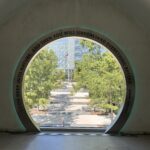


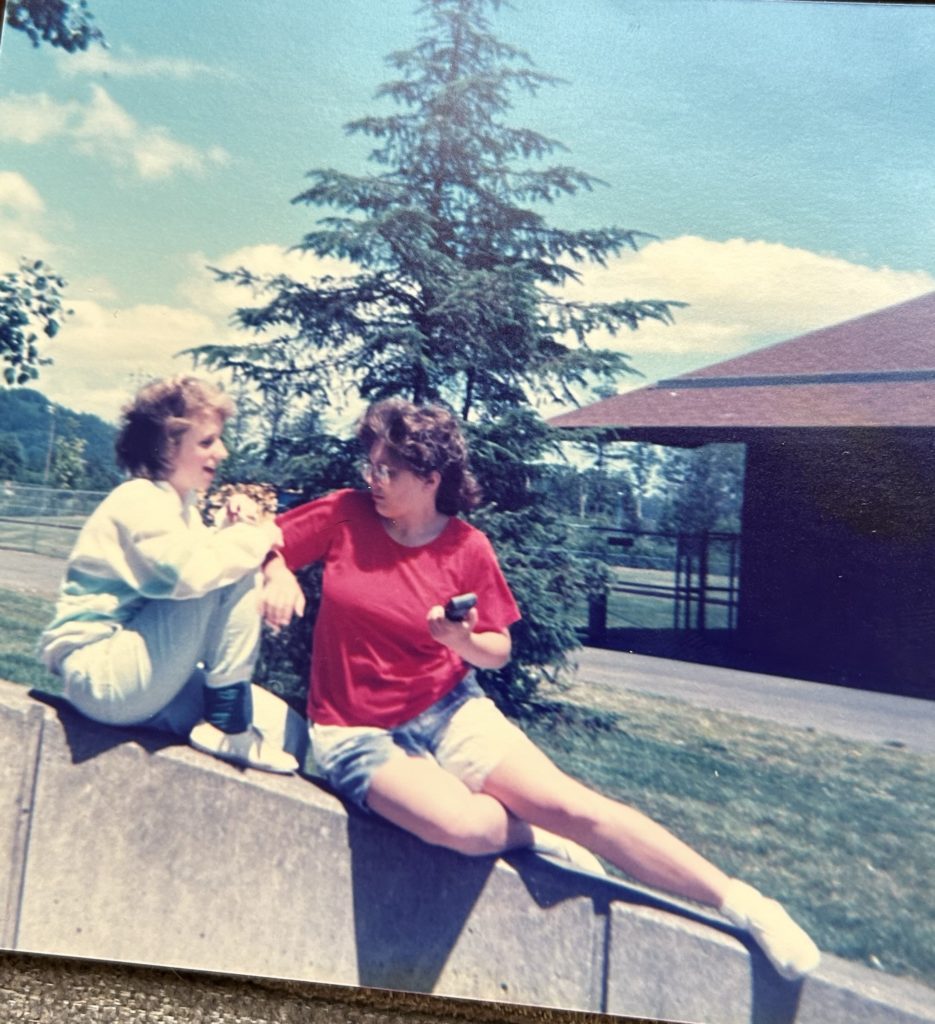

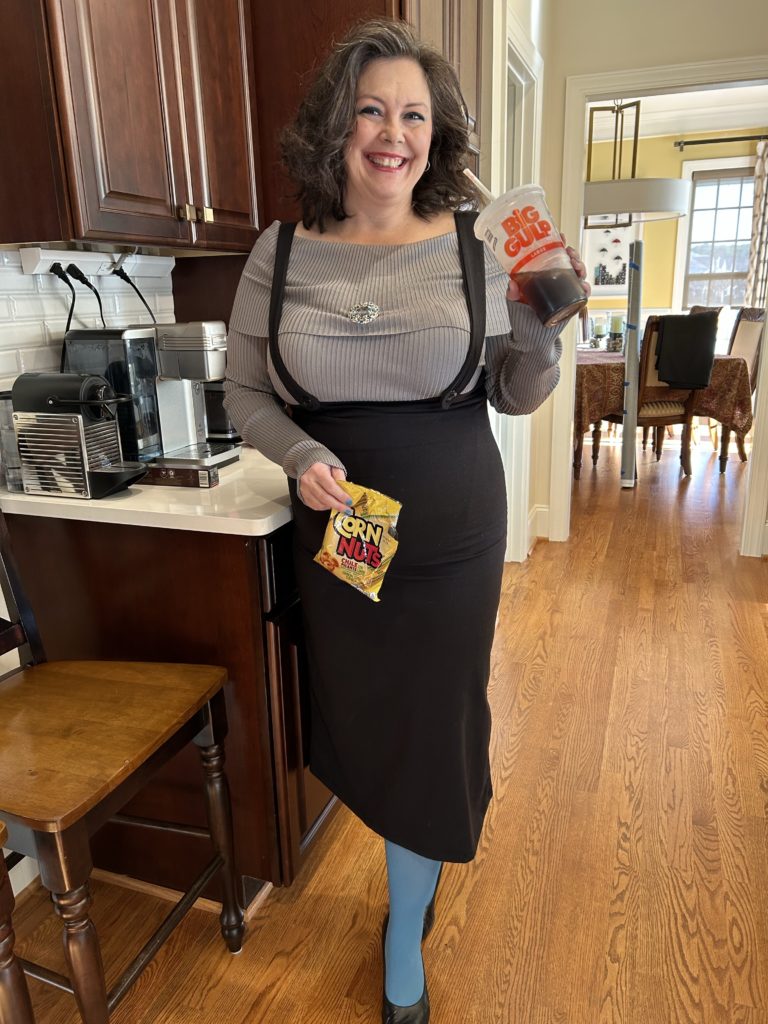
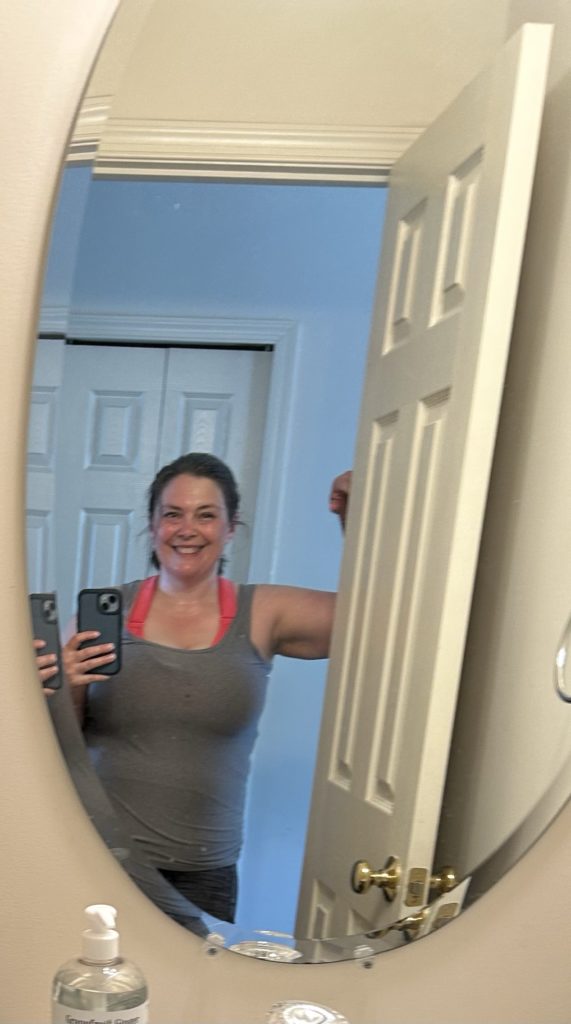
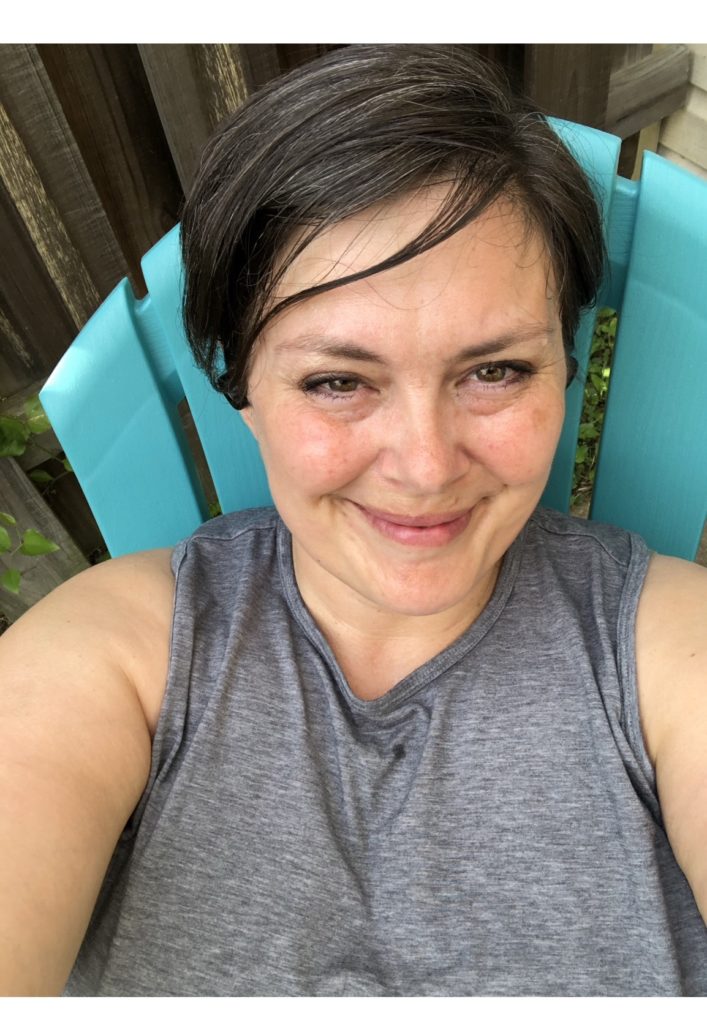
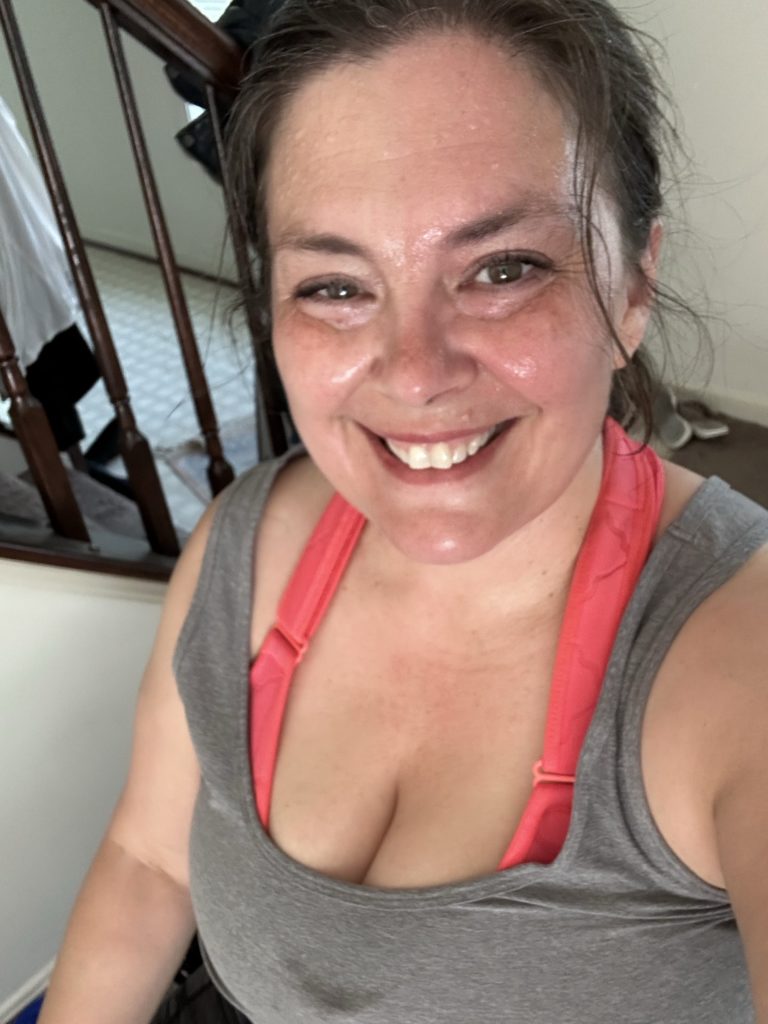
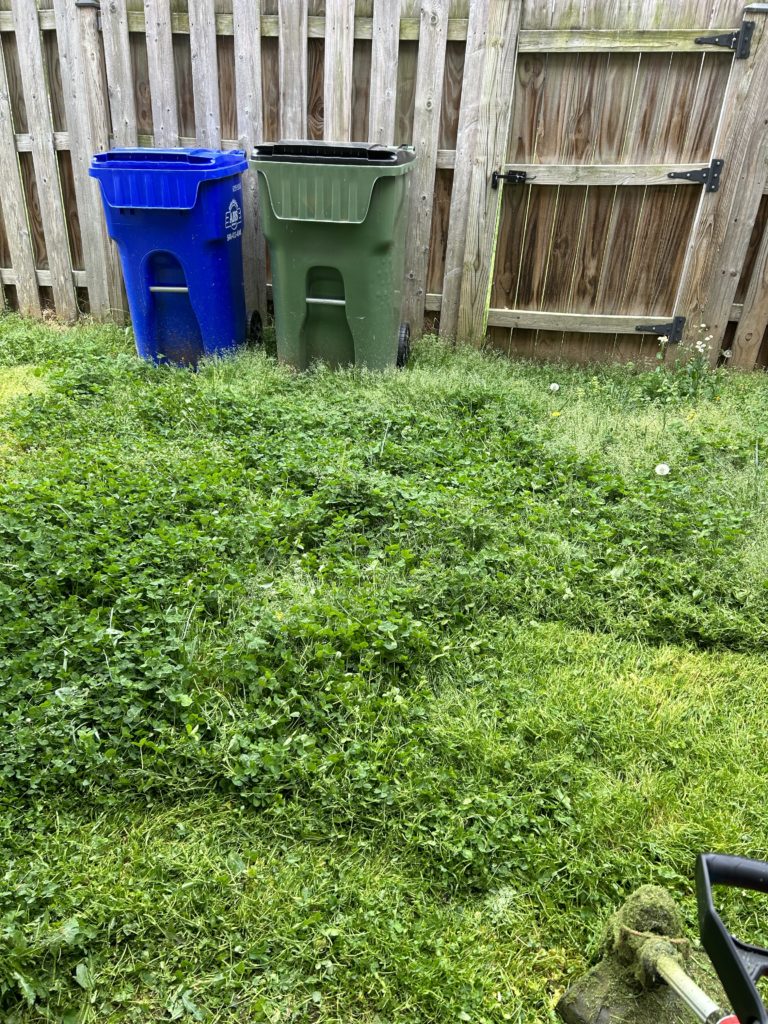

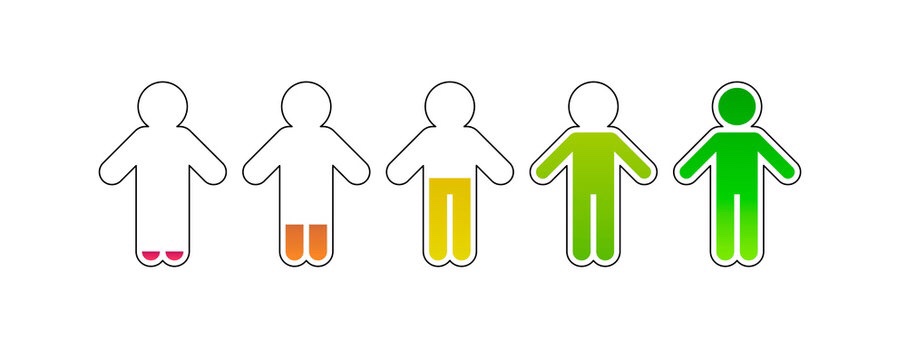

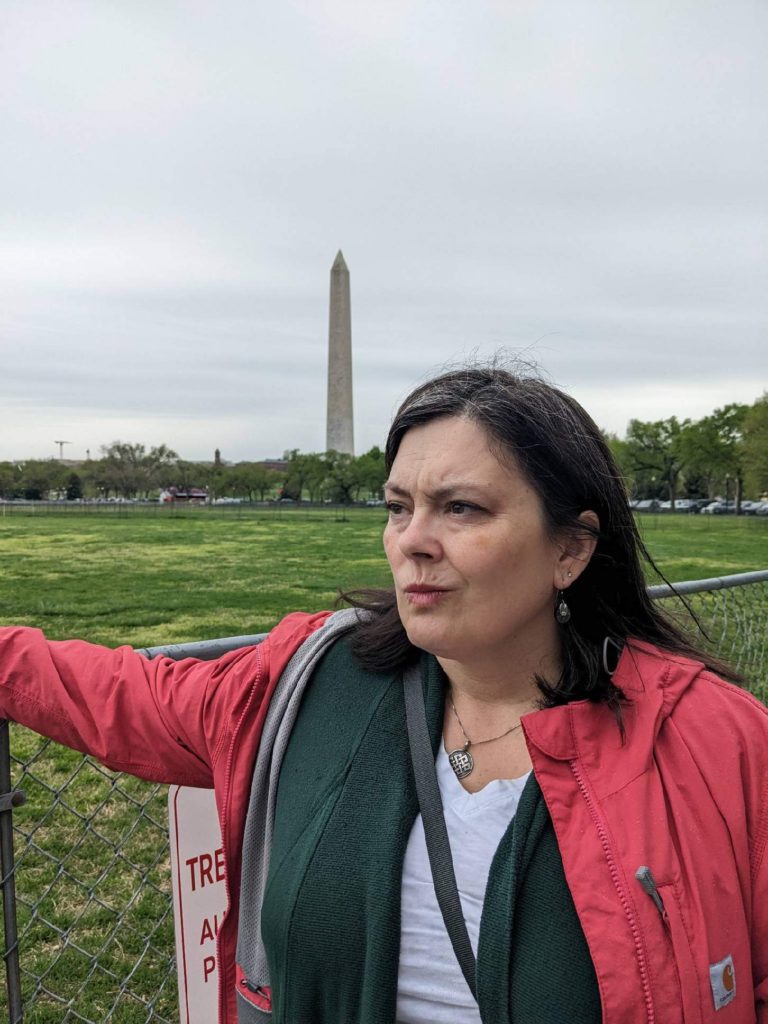
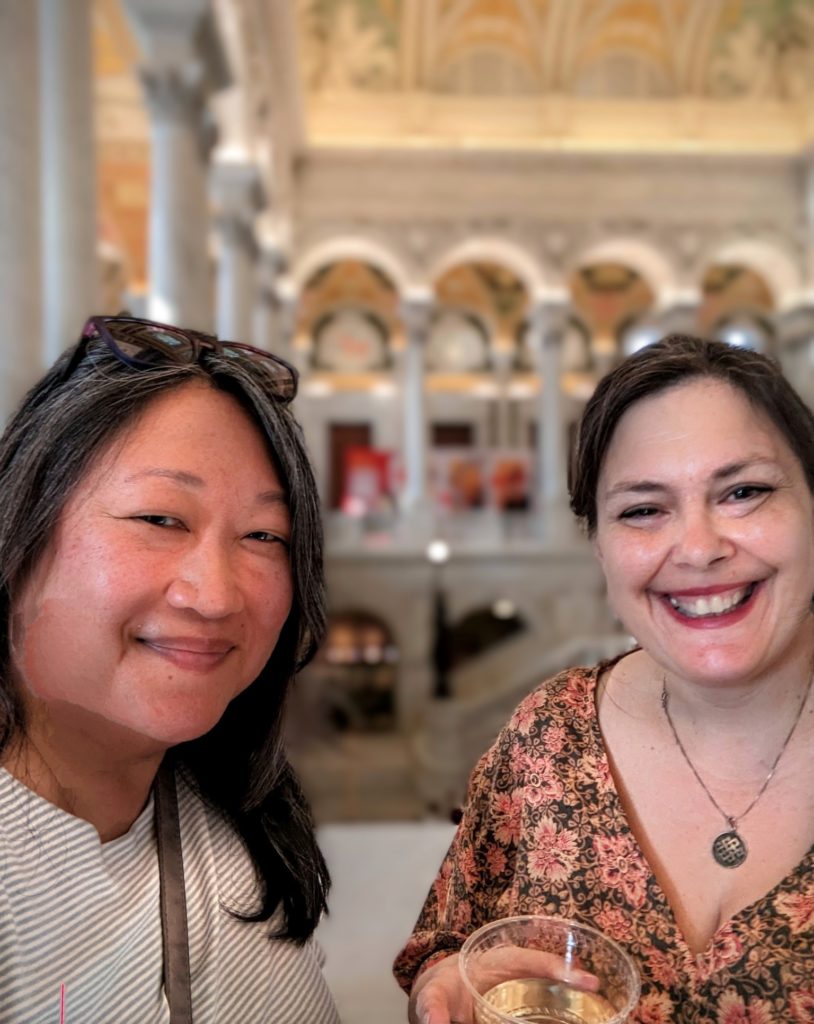
 D5 Creation
D5 Creation